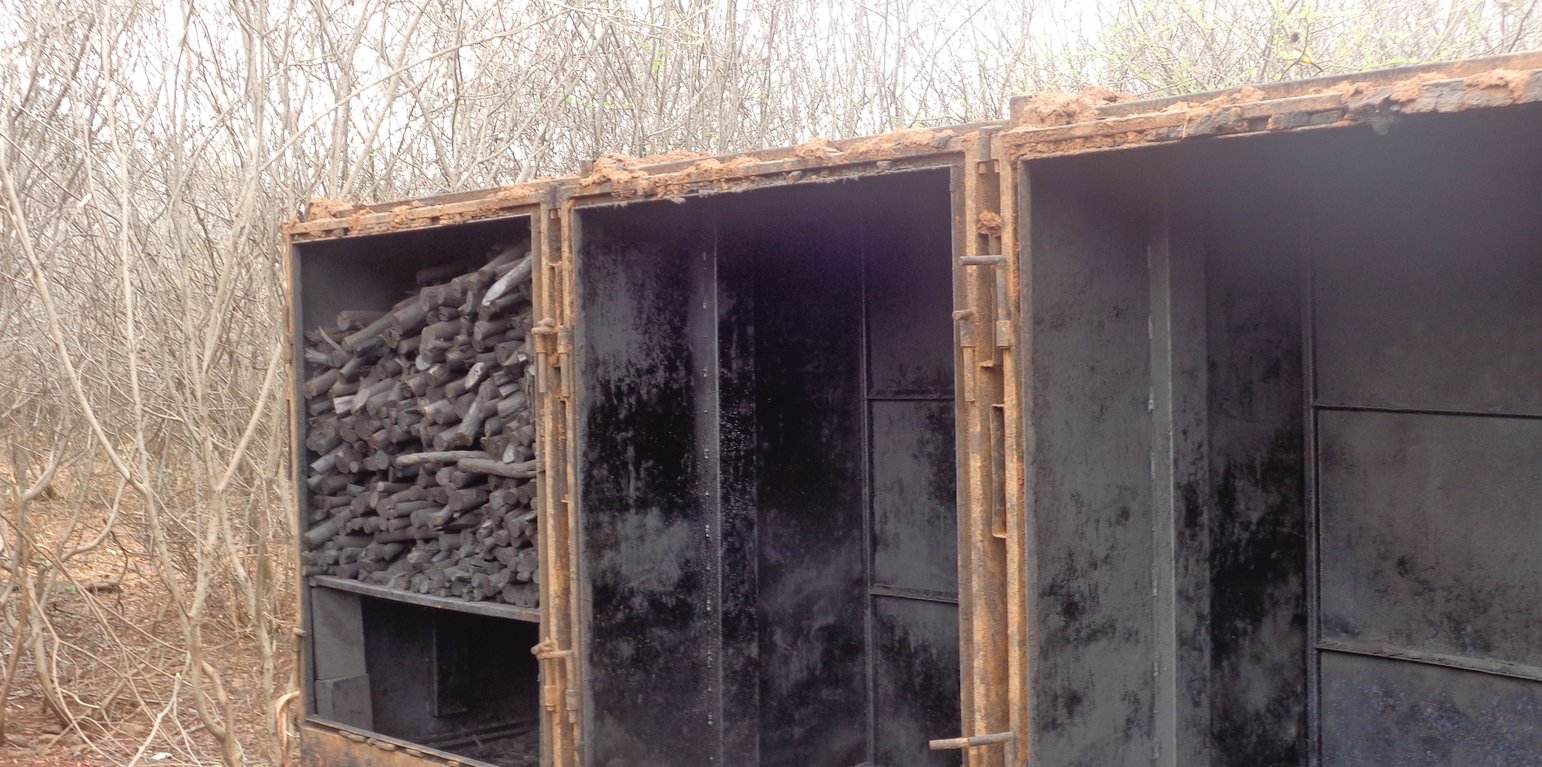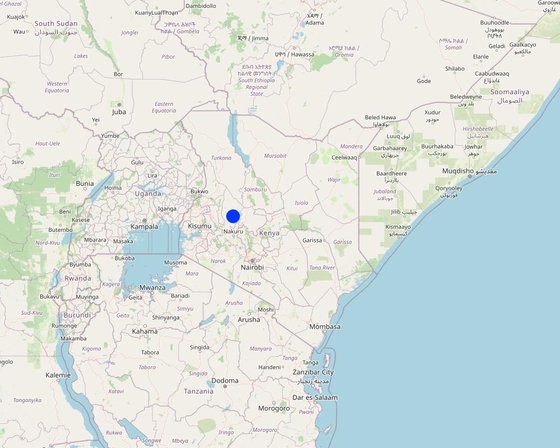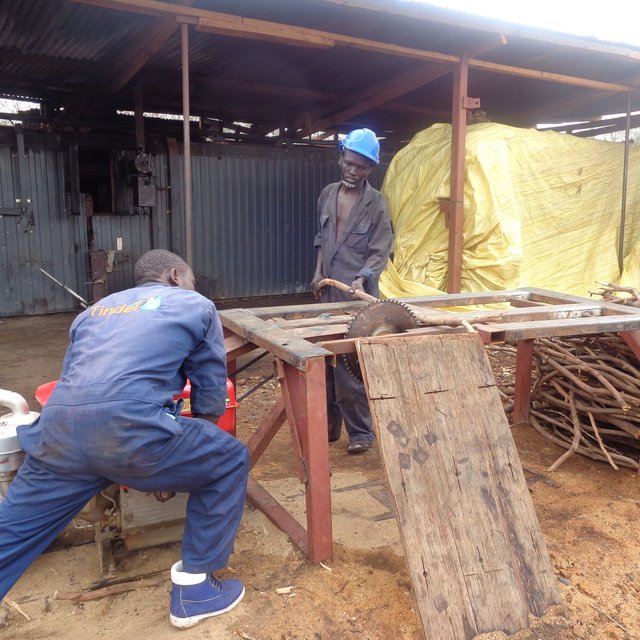



The use of invasive Prosopis wood for charcoal production is intended to control its spread, create space for agricultural or grazing activities and restore degraded land.
Tinder Eco fuels limited is a private company whose aim is to efficiently produce charcoal through modern, environmental friendly techniques using the ‘EURO’ line charcoal kilns. Approximately 60 tons of invasive Prosopis wood are collected weekly, ejecting an estimate of Ksh. 400,000 weekly income to the local community.
Prosopis, the only tree in Baringo permitted for charcoal production is cut by land users and dried for three days to lower its water content before being transported to the production firm. The trees are then weighed and cut into 15 cm lengths, a corresponding dimension of the loading and offloading trolleys. In the carbonizing chambers, the raw materials are subjected to indirect burning and consequent cooling by pyrolysis gas heated at 250 – 500 degree celcius, a process that takes 8-16 hours. Operations in the chambers are controlled and regulated by an assembly of sensors. Ready charcoal is offloaded into a winch which is covered and sealed by a sandy-clay mixture for further cooling to prevent combustion.
Land users prefer this technology to the traditional one as it is more efficient with a guaranteed income from the sale of Prosopis wood. The carbonization process is fine-tuned, minimizing smoke production and the number of point sources of pollution through household-based traditional charcoal production. A steady production process that is resilient to rainy seasons ensures market readiness and reduces price fluctuations. Clearing the land from invasive Prosopis increases the land's economic and ecological value and the provision of mutliple ecosystem services relevant for local people.

Location: Marigat Sub-County, Baringo County, Kenya
No. of Technology sites analysed: single site
Spread of the Technology: applied at specific points/ concentrated on a small area
Date of implementation: 2015
Type of introduction






| Specify input | Unit | Quantity | Costs per Unit (n.a.) | Total costs per input (n.a.) | % of costs borne by land users |
| Labour | |||||
| machine installation (35% of machine cost) | Men | 14.0 | 50000.0 | 700000.0 | 100.0 |
| Equipment | |||||
| ‘EURO’ line charcoal kiln | a set | 1.0 | 2000000.0 | 2000000.0 | 100.0 |
| welding machine | unit | 1.0 | 22000.0 | 22000.0 | 100.0 |
| cutting disk | unit | 1.0 | 1800.0 | 1800.0 | 100.0 |
| Construction material | |||||
| Operations' shade | building | 1.0 | 100000.0 | 100000.0 | 100.0 |
| Other | |||||
| business operations permit | operations permit | 1.0 | 20000.0 | 20000.0 | 100.0 |
| Total costs for establishment of the Technology | 2'843'800.0 | ||||
| Specify input | Unit | Quantity | Costs per Unit (n.a.) | Total costs per input (n.a.) | % of costs borne by land users |
| Labour | |||||
| Technical employees | monthly salary | 12.0 | 60000.0 | 720000.0 | 100.0 |
| Casual workers | monthly salary | 3.0 | 20000.0 | 60000.0 | 100.0 |
| Plant material | |||||
| wood | tonne | 3360.0 | 1200.0 | 4032000.0 | 100.0 |
| water | |||||
| Other | |||||
| permit | 1.0 | 20000.0 | 20000.0 | 100.0 | |
| electicity | amperes | 180.0 | 267.0 | 48060.0 | 100.0 |
| water | litres | 54000.0 | 0.8 | 43200.0 | 100.0 |
| Total costs for maintenance of the Technology | 4'923'260.0 | ||||
Coppicing of the cut trees slightly increases the woody biomass of Prosopis weed.
Land management is simplified on condition that other restorative measures are incorporated
Charcoal production has led to the establishment of community-based charcoal production associations which regulate all transactions relating to charcoal production, marketing and sale.
Am initial directive restricting charcoal production to Prosopis trees enhanced the protection of indigenous trees , creating awareness on the need for their management.